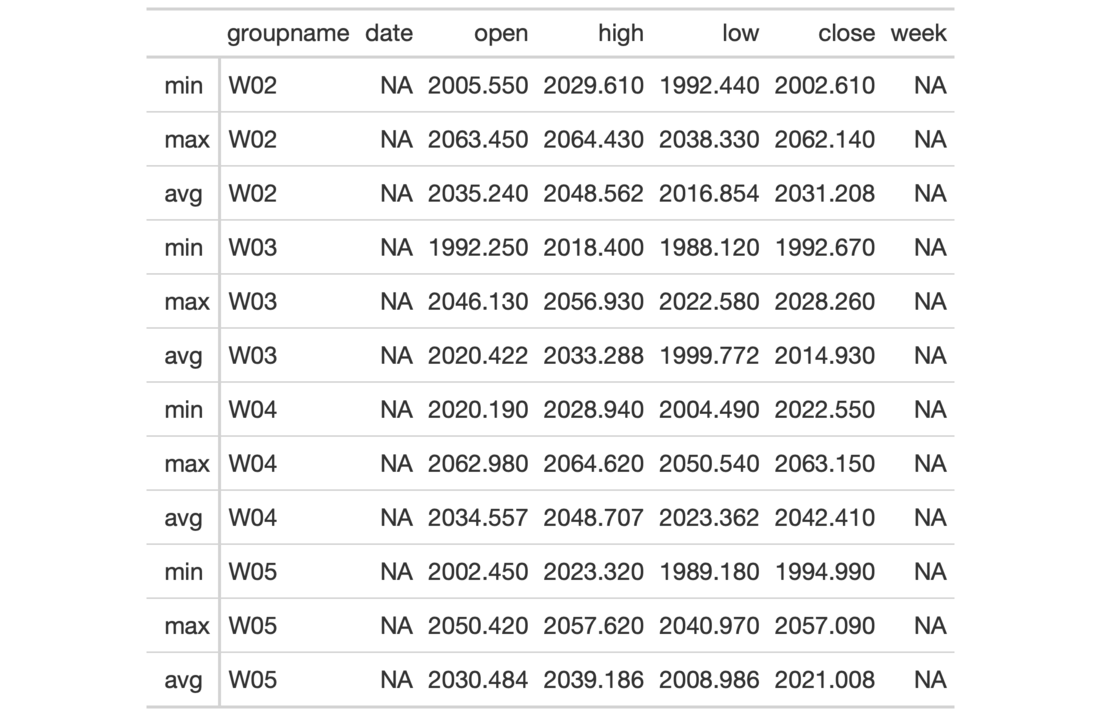Get a list of summary row data frames from a gt_tbl object where summary
rows were added via the summary_rows() function. The output data frames
contain the groupname and rowname columns, whereby rowname contains
descriptive stub labels for the summary rows.
extract_summary(data)
Arguments
| data | A table object that is created using the |
|---|
Value
A list of data frames containing summary data.
Figures

Function ID
13-5
See also
Other Export Functions:
as_latex(),
as_raw_html(),
as_rtf(),
gtsave()
Examples
# Use `sp500` to create a gt table with # row groups; create summary rows by row # group (`min`, `max`, `avg`) and then # extract the summary rows as a list # object summary_extracted <- sp500 %>% dplyr::filter( date >= "2015-01-05" & date <="2015-01-30" ) %>% dplyr::arrange(date) %>% dplyr::mutate( week = paste0( "W", strftime(date, format = "%V")) ) %>% dplyr::select(-adj_close, -volume) %>% gt( rowname_col = "date", groupname_col = "week" ) %>% summary_rows( groups = TRUE, columns = vars(open, high, low, close), fns = list( min = ~min(.), max = ~max(.), avg = ~mean(.)), formatter = fmt_number, use_seps = FALSE ) %>% extract_summary() # Use the summary list to make a new # gt table; the key thing is to use # `dplyr::bind_rows()` and then pass the # tibble to `gt()` (the `groupname` and # `rowname` magic column names create # row groups and a stub) tab_1 <- summary_extracted %>% unlist(recursive = FALSE) %>% dplyr::bind_rows() %>% gt()